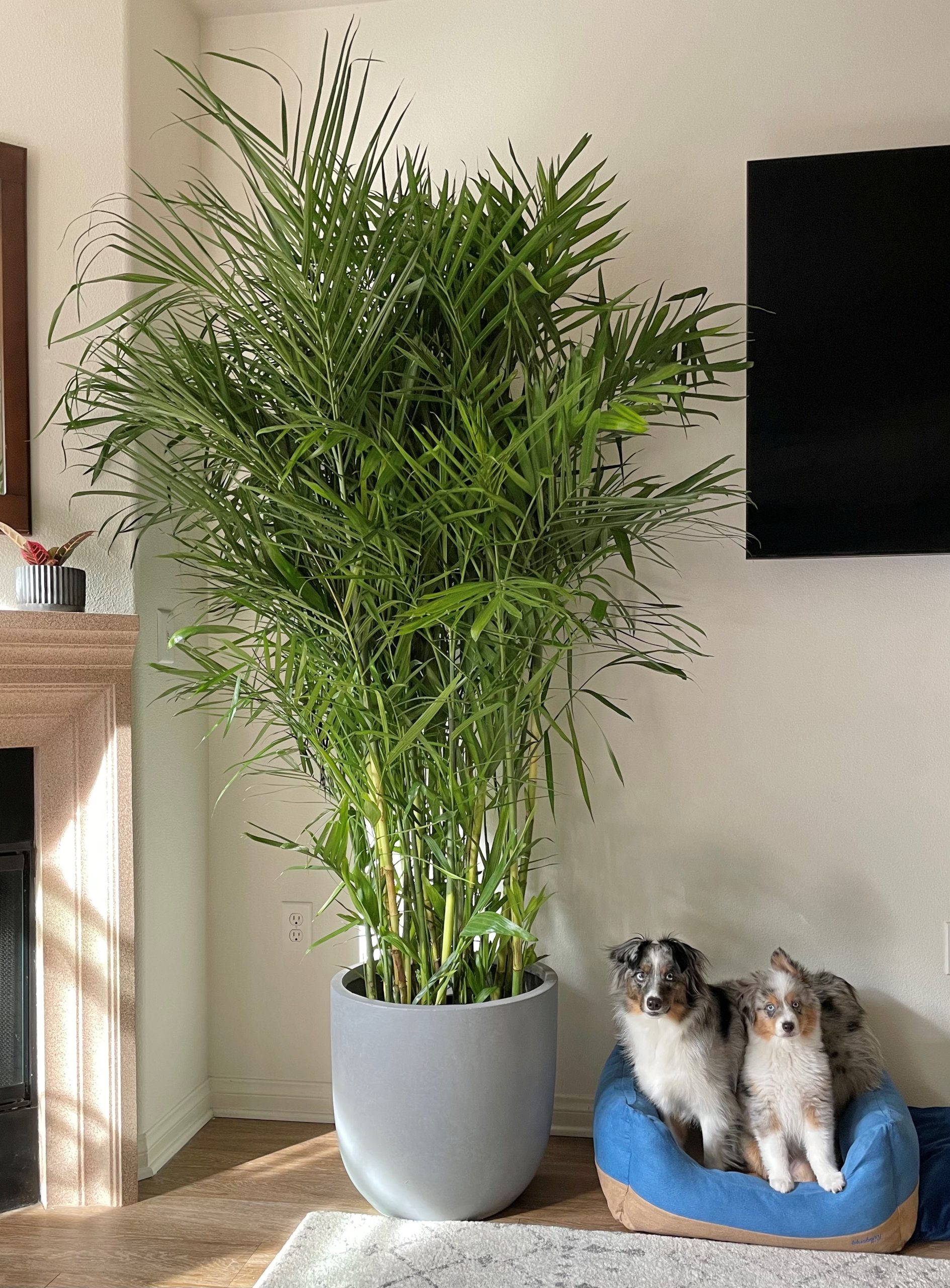
Source www.plantz.com
Welcome to our comprehensive guide on bamboo palm care! Whether you are a seasoned plant enthusiast or a beginner looking to add a touch of green to your indoor space, this article will provide you with all the information you need to ensure your bamboo palm thrives.
Bamboo palms, also known as Chamaedorea seifrizii, are beautiful and elegant plants that can add a tropical vibe to any room. Not only are they aesthetically pleasing, but they also offer numerous benefits including improved indoor air quality and reduced stress levels.
The Perfect Location for Your Bamboo Palm
Choosing the Ideal Spot
When it comes to finding the perfect location for your bamboo palm, it’s important to consider its natural habitat. These plants are native to the rainforests of Mexico and Central America, where they thrive in the dappled shade of taller trees. Therefore, replicating similar conditions is crucial to their growth.
Place your bamboo palm in a spot with bright, indirect light. Avoid direct sunlight, as it can scorch the leaves. North or east-facing windows are usually the best options. If your room lacks natural light, you can also use fluorescent lights or grow lights to provide the necessary illumination.
Temperature and Humidity Requirements
Bamboo palms prefer a warm and humid environment, similar to their native habitat. They thrive in temperatures between 60°F and 80°F (15°C to 27°C). Avoid exposing them to drafts or abrupt temperature changes, as it can lead to leaf browning and other stress-related issues.
As for humidity, these plants enjoy moist air. If the air in your home is dry, you can increase humidity levels around your bamboo palm by misting its leaves or placing a small tray filled with water nearby. Another effective option is to use a humidifier to maintain an optimal humidity range of 50% to 60%.
Proper Watering Techniques
Finding the Right Balance
Proper watering is key to bamboo palm care. Overwatering can lead to root rot and other fungal diseases, while underwatering can cause wilting and brown spots. Achieving the right balance is crucial for the health of your plant.
Allow the top inch of the soil to dry out before watering your bamboo palm again. Stick your finger into the soil to check its moisture level. If it feels dry, it’s time to water. Ensure that the pot has drainage holes to prevent water from pooling at the roots.
Water Quality and Methods
Water quality is also important for these plants. They prefer water that is free from chlorine, fluoride, and other chemicals. If your tap water contains these substances, you can let it sit out overnight before using it. Alternatively, you can use filtered or distilled water.
When watering, pour water until it starts to flow out of the drainage holes. Discard any excess water after a few minutes to prevent waterlogged soil. Avoid using excessively cold or hot water, as it can shock the plant’s roots.
Feeding and Fertilization
The Right Diet for Healthy Growth
Feeding your bamboo palm with the right nutrients will ensure it grows healthy and vibrant. A well-balanced fertilizer specifically formulated for indoor plants is the best choice. Look for a fertilizer with a ratio of 10-10-10 or 20-20-20, which indicates equal proportions of nitrogen, phosphorus, and potassium.
During the growing season, which typically spans from spring to early fall, fertilize your bamboo palm every two to four weeks. Follow the instructions on the fertilizer packaging for the correct dosage. During winter, when the plant is in a dormant phase, reduce the frequency to once every two months.
Table Breakdown of Bamboo Palm Care
| Aspect | Requirements |
|---|---|
| Light | Bright, indirect light |
| Temperature | 60°F – 80°F (15°C – 27°C) |
| Humidity | 50% – 60% |
| Watering | Allow top inch of soil to dry out |
| Fertilization | 10-10-10 or 20-20-20 every 2-4 weeks |
Frequently Asked Questions about Bamboo Palm Care
1. How often should I repot my bamboo palm?
Repot your bamboo palm every two to three years or when it outgrows its current container. Choose a pot that is one size larger and use a well-draining potting mix.
2. Can I place my bamboo palm outdoors?
Bamboo palms are primarily indoor plants, but they can be placed outdoors during the summer months in a shaded area away from direct sunlight.
3. What should I do if my bamboo palm’s leaves turn brown?
Brown leaves can indicate various issues, including overwatering, underwatering, low humidity, or too much direct sunlight. Assess your plant’s care routine and make adjustments accordingly.
4. How do I propagate my bamboo palm?
Bamboo palms can be propagated through division. Carefully remove the plant from its pot and separate the offshoots with their own roots. Plant them in separate containers with fresh potting mix.
5. Are bamboo palms safe for pets?
While bamboo palms are not toxic to pets, it’s always best to prevent them from chewing on the leaves or ingesting any plant material. Monitor your pets’ interactions with the plant and seek veterinary assistance if any unusual symptoms occur.
Conclusion
Congratulations! You are now equipped with the knowledge needed to provide optimal care for your bamboo palm. By considering the plant’s light, temperature, humidity, watering, and fertilization requirements, you can ensure its growth and maintain its lush and vibrant appearance.
Remember to regularly assess your bamboo palm’s needs and make adjustments as necessary. With proper care and attention, your bamboo palm will continue to thrive and bring a touch of natural beauty to your indoor space.